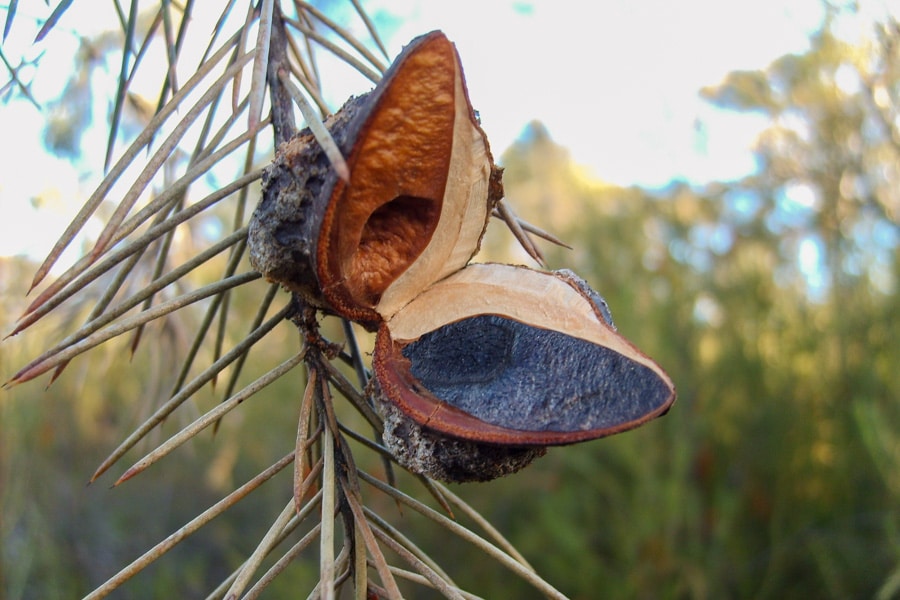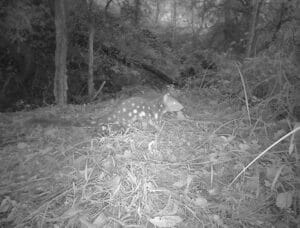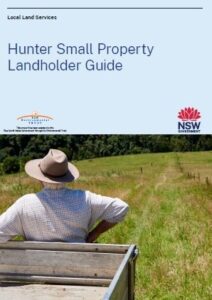
Generally, most plants store their seed in the soil seed bank. Some species however, typically in fire prone, nutrient-poor and/or seasonally dry areas, store their seed on the plant, often in the canopy. This strategy of seed storage is called serotiny.
Serotinous plants store their seeds in pods or cones and wait for an environmental trigger. This trigger is associated with what causes plant or branch death.
Serotinous species can be viewed as fire-dependent. This is because:
- Fire causes plant or branch death which leads to seed release
- Fire provides a recruiting window through the increased availability of nutrients, space and light, and reduced competition which results after a fire.
An example of a fire-sensitive serotinous plant that relies on fire for plant death and therefore seed release that can be found in the MidCoast is the Bushy Needlebush (Hakea sericea). Keep an eye out for these next time you’re walking in dry sclerophyll forest or heath.
There are other ways serotinous species need fire. An example of this is the Lodgepole pine (Pinus contorta). This pine requires heat from fire to melt resin which binds cones together to release its seed.
Changes to fire regimes, particularly fire intervals can be problematic for serotinous species, particularly if the species is an obligate-seeder.
Come along to our Eco Burn Education workshops to learn more about fire regimes and the relationship fire has with plants. To find out more click here: https://www.eventbrite.com/cc/eco-burn-education-program-1090159. Or, or more information on this topic see the references below or contact Olivia Eglin, Fire Ecology Education Officer on mc2t.fire@gmail.com.
Reference:
Georgia, U. Serotiny and the Serotinous Cone. [online] Treehugger. Available at: https://www.treehugger.com/serotiny-and-the-serotinous-cone-1342894
Lamont, B.B. and Enright, N.J. (2000). Adaptive advantages of aerial seed banks. Plant Species Biology, 15(2), pp.157–166. doi: https://doi.org/10.1046/j.1442-1984.2000.00036.x




